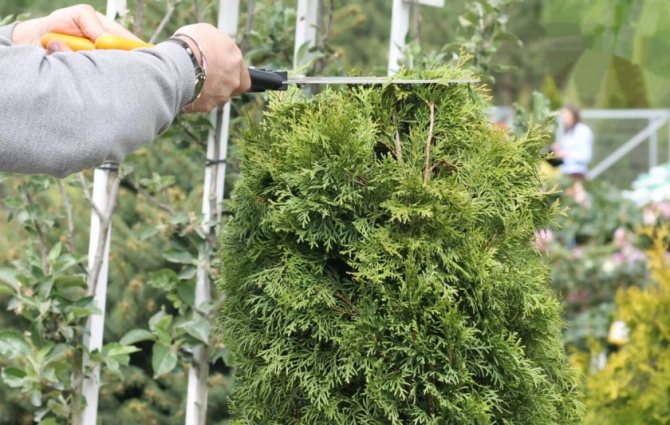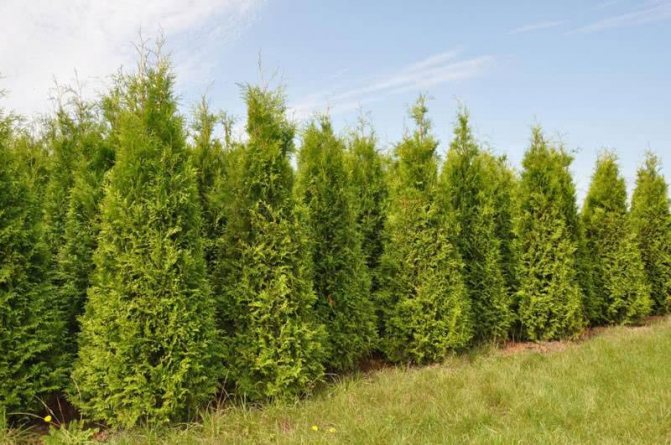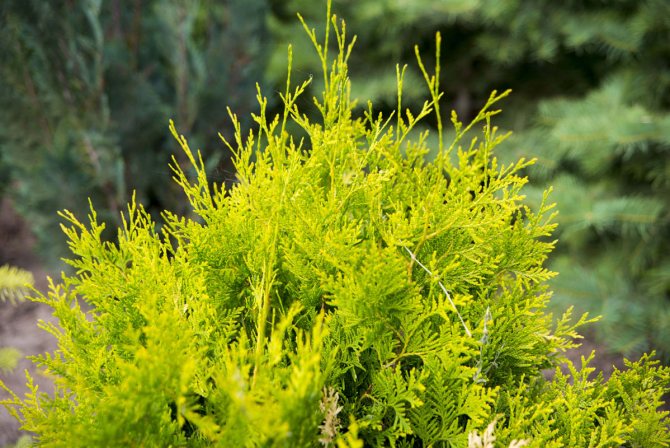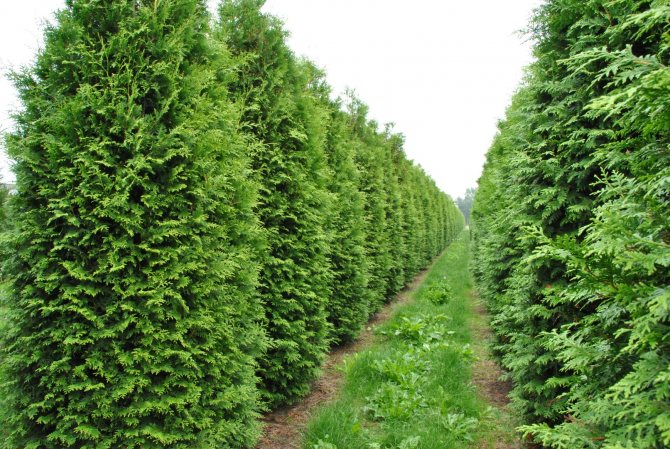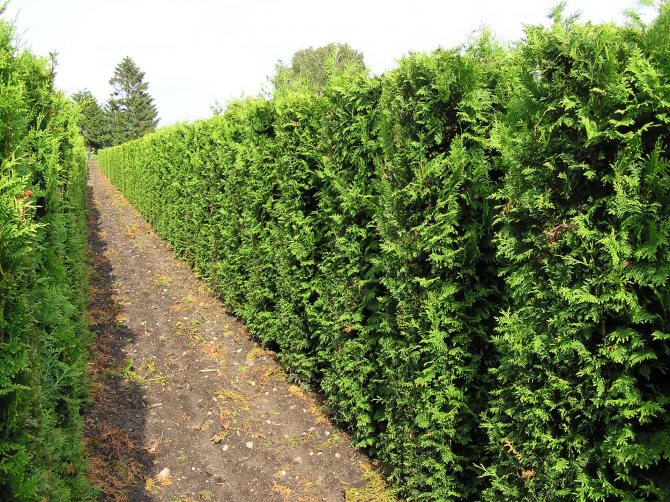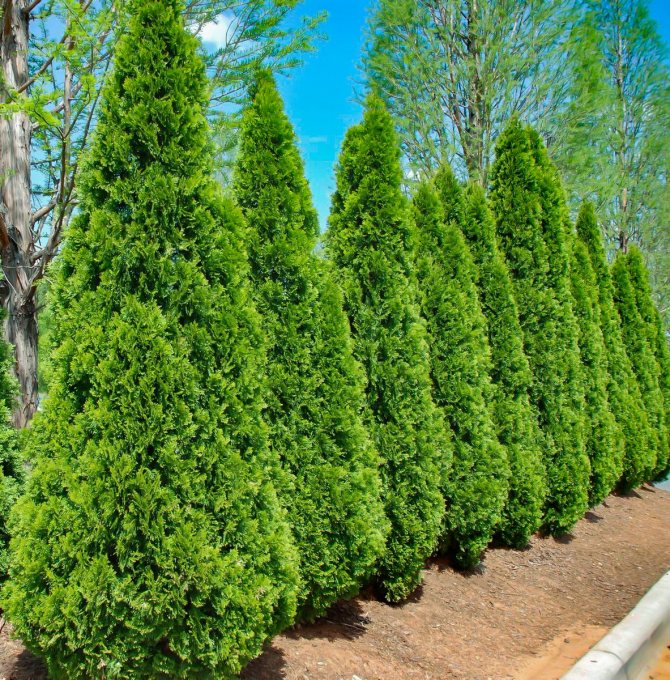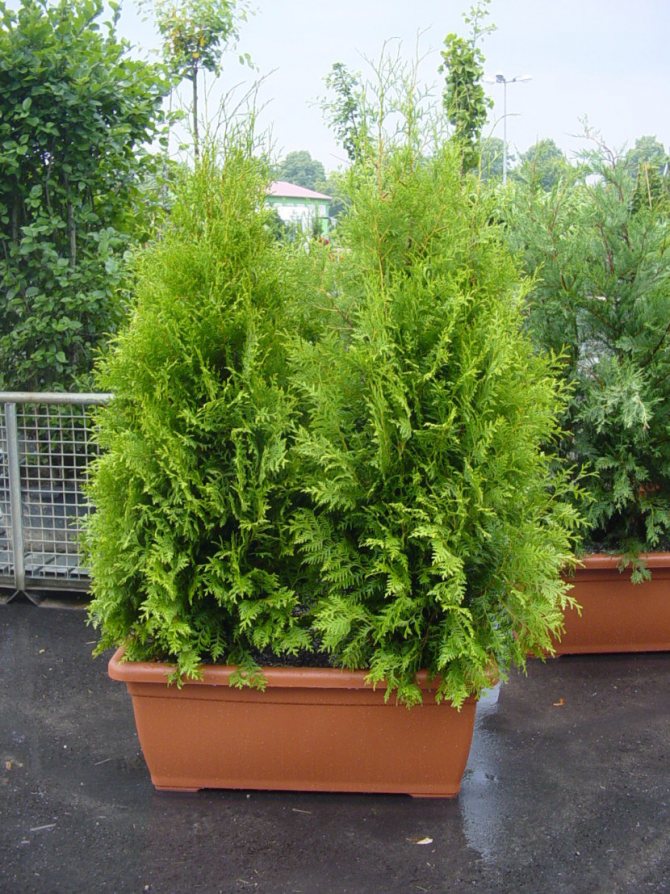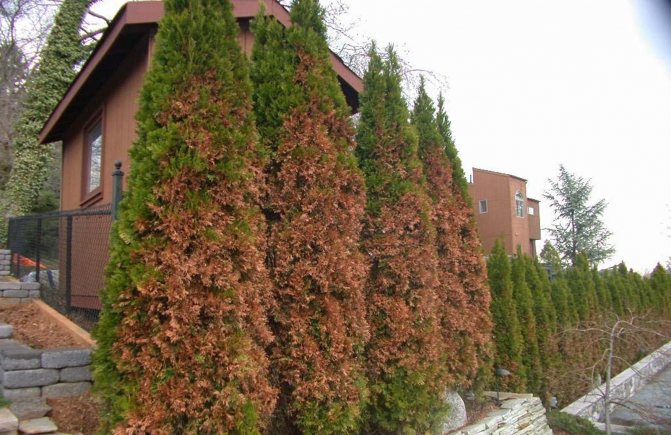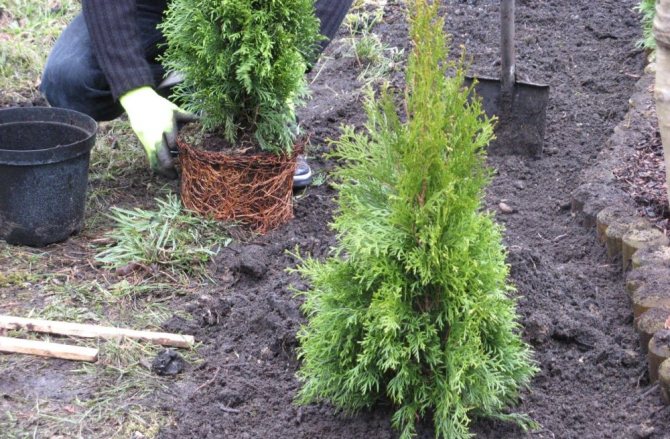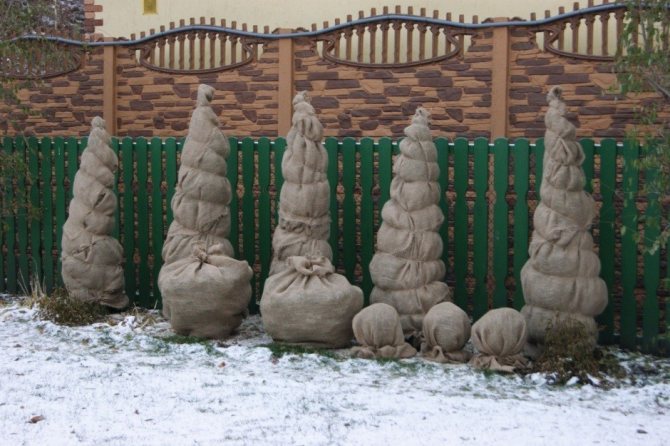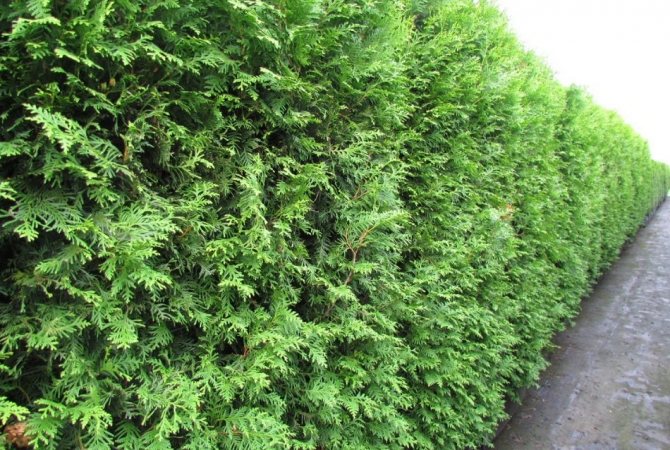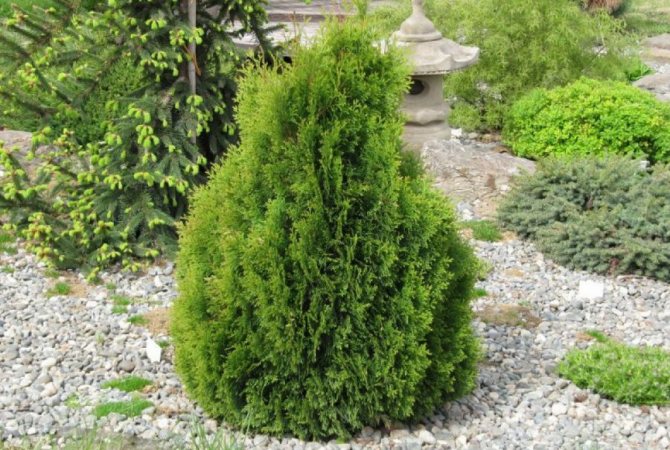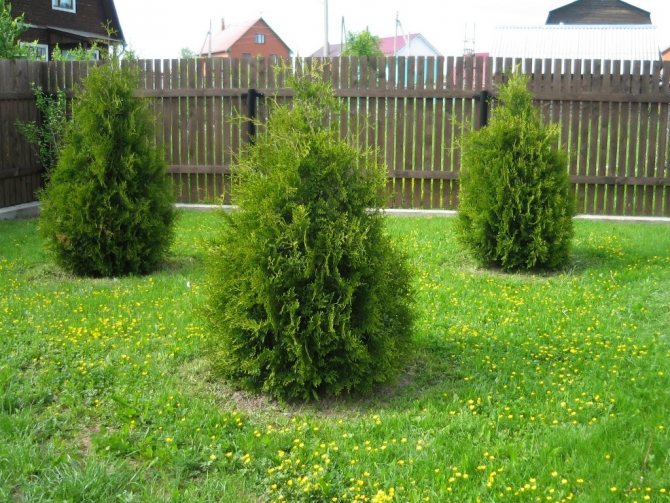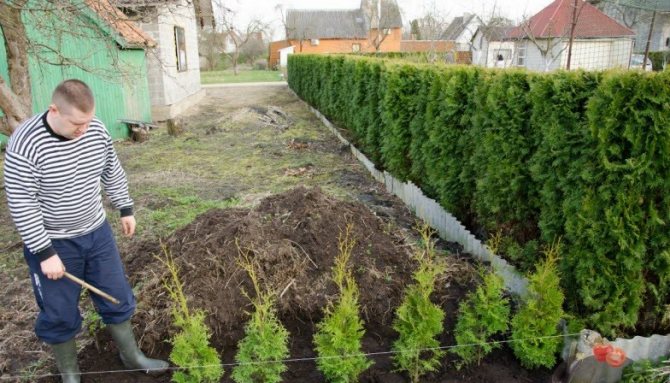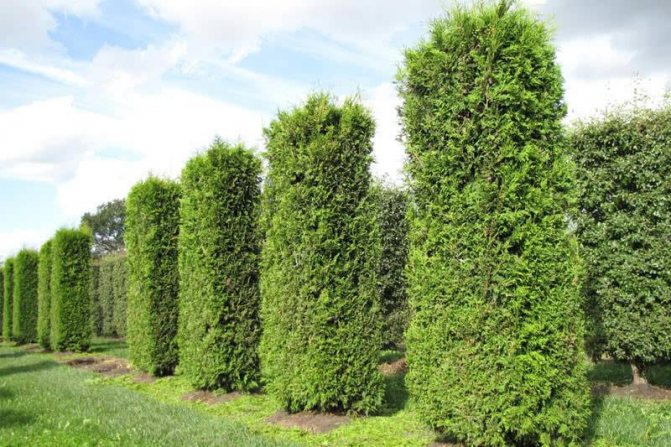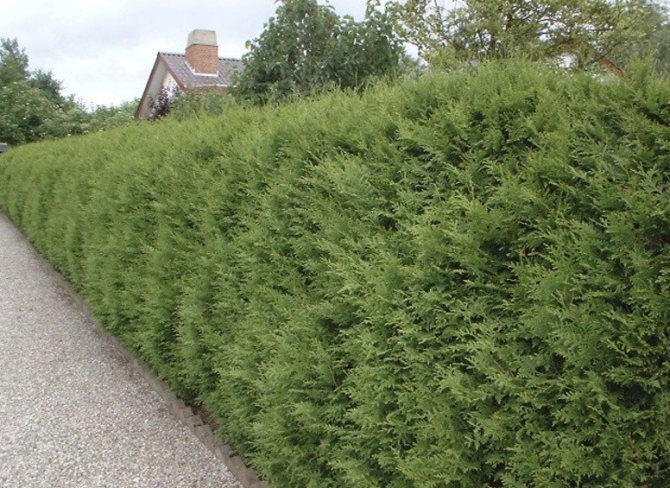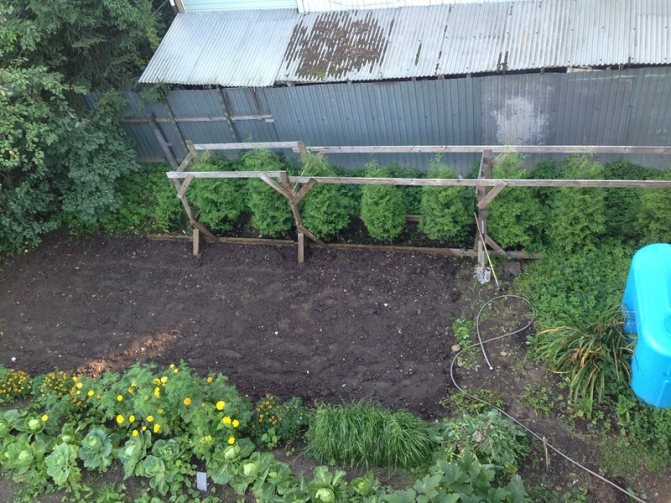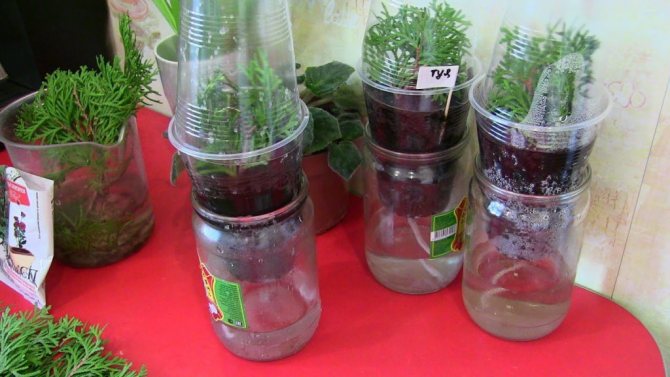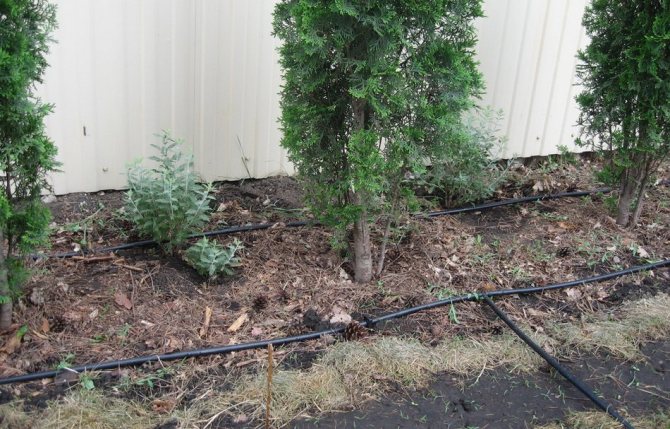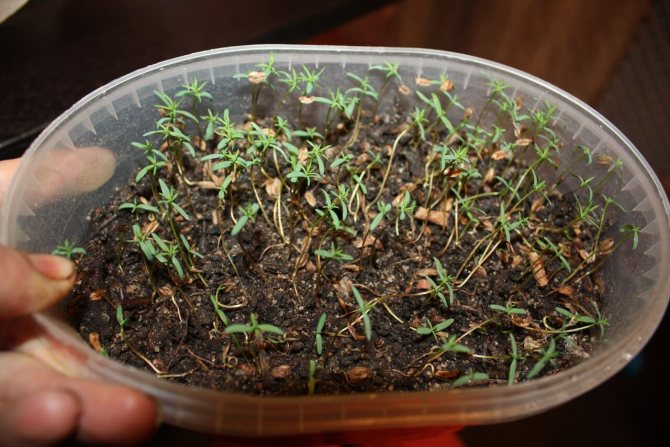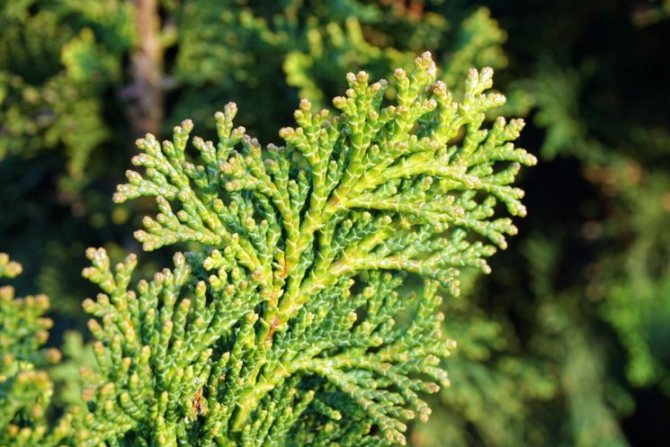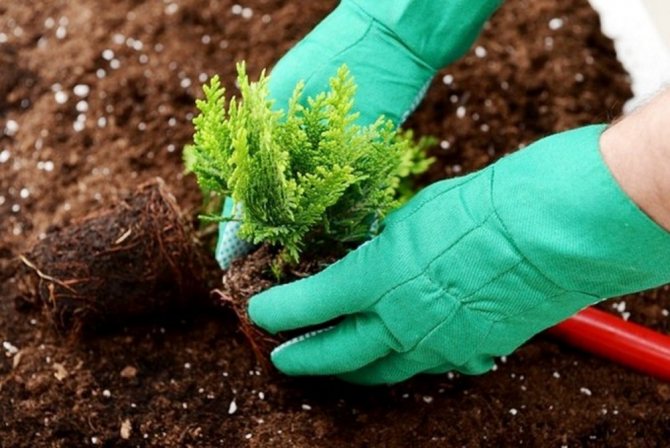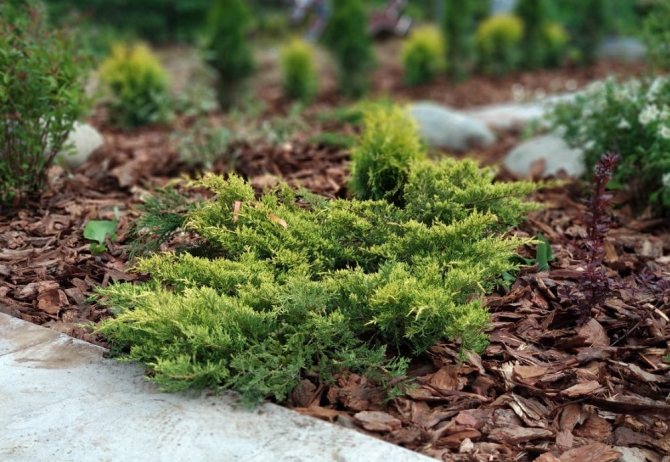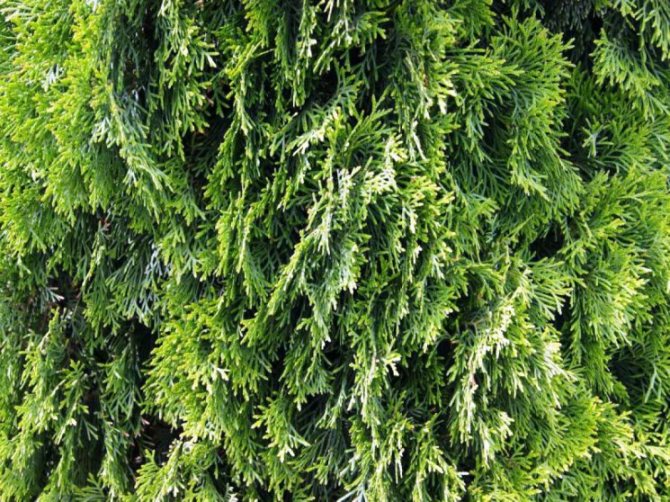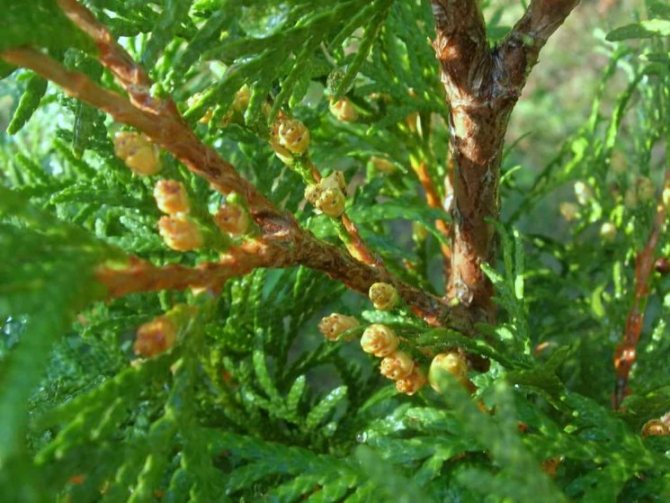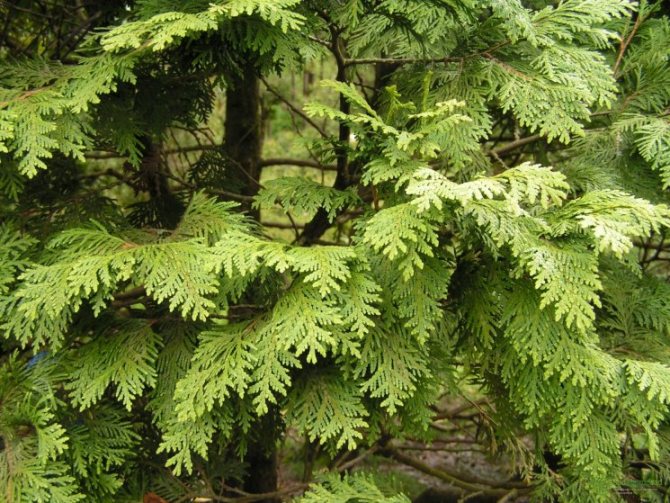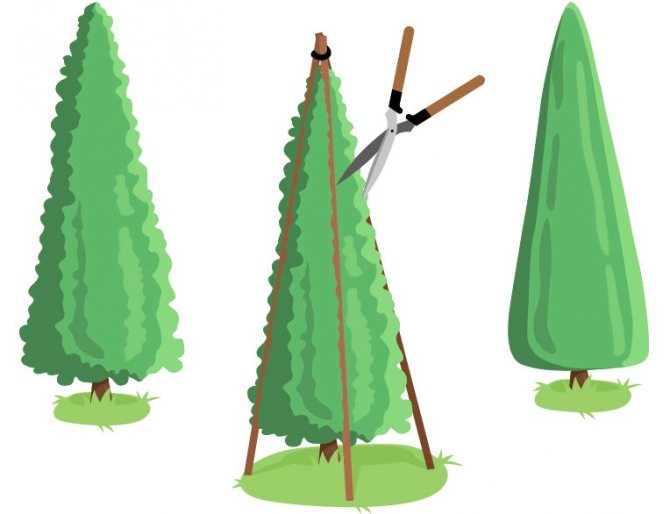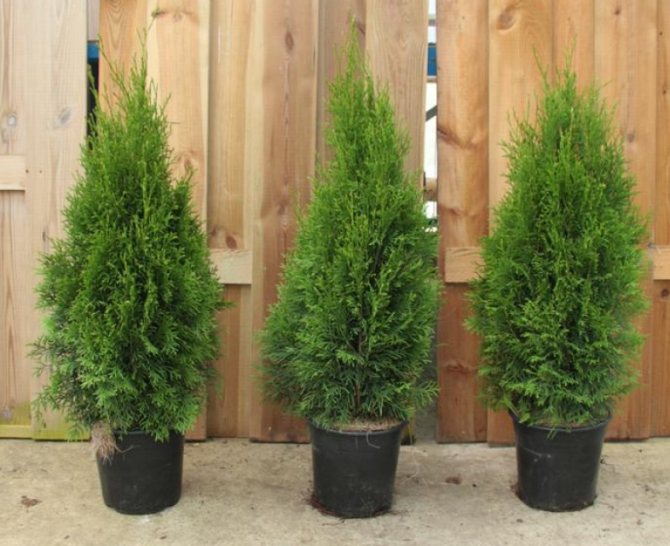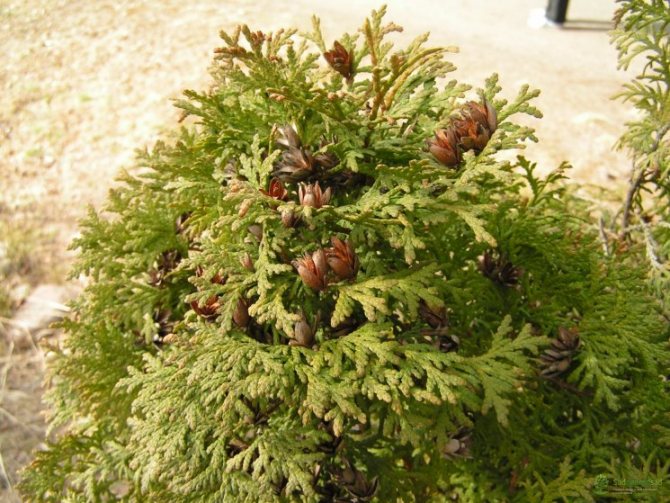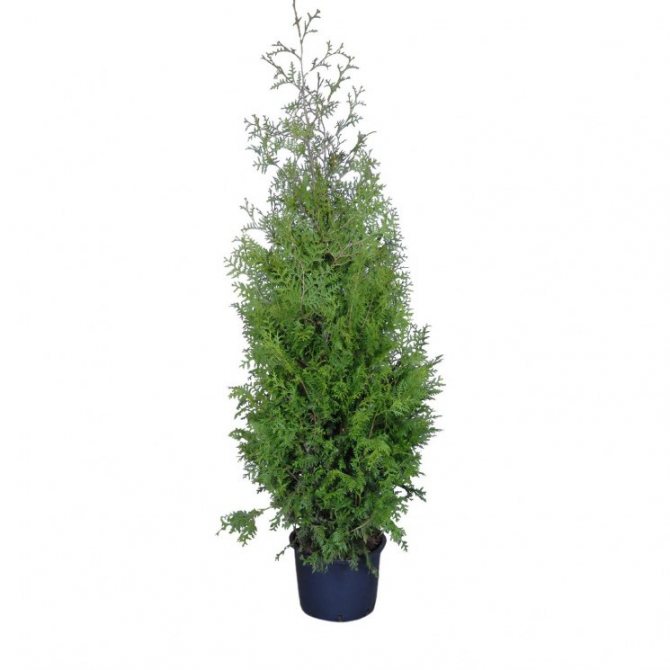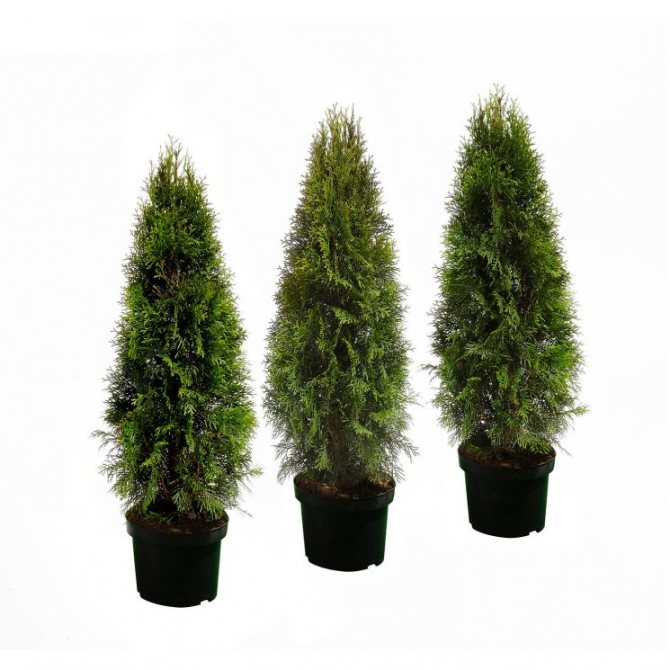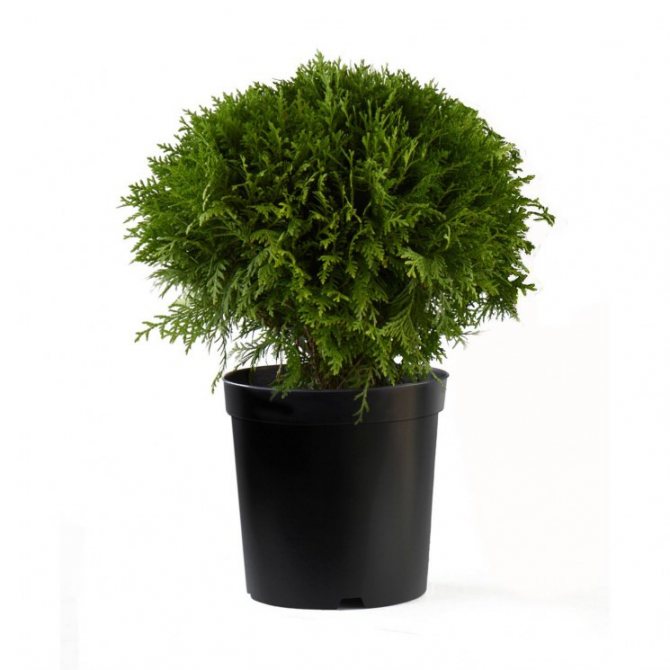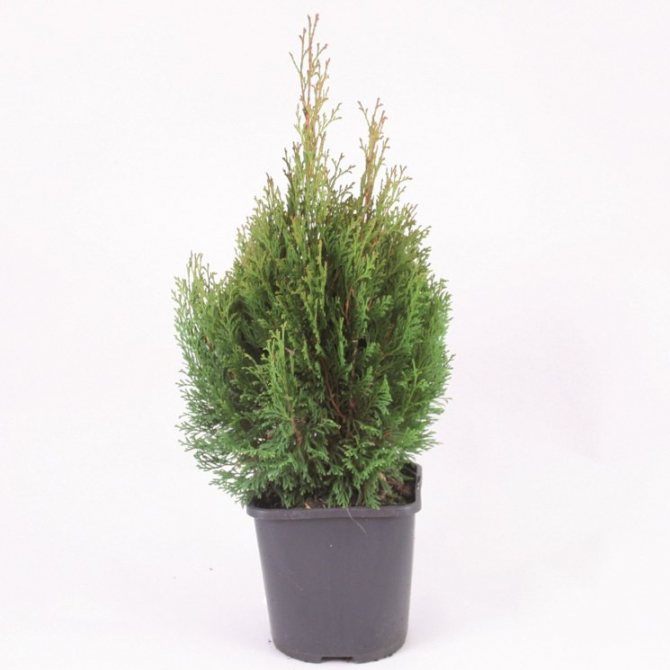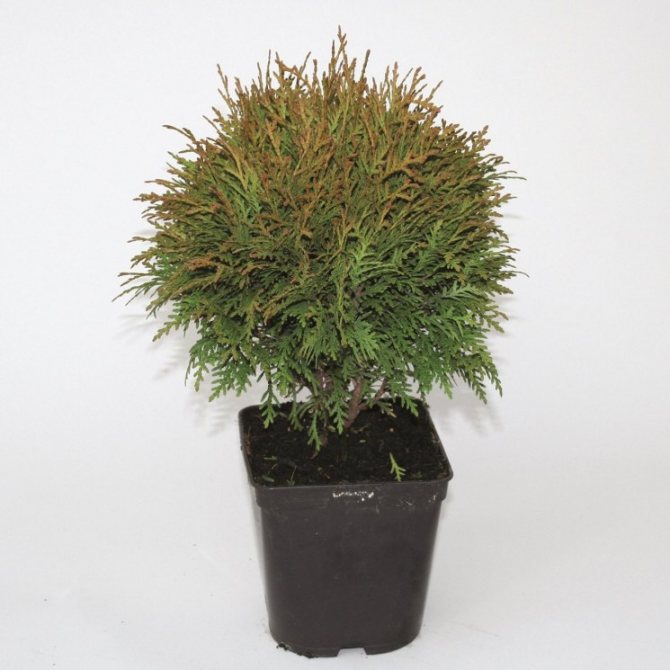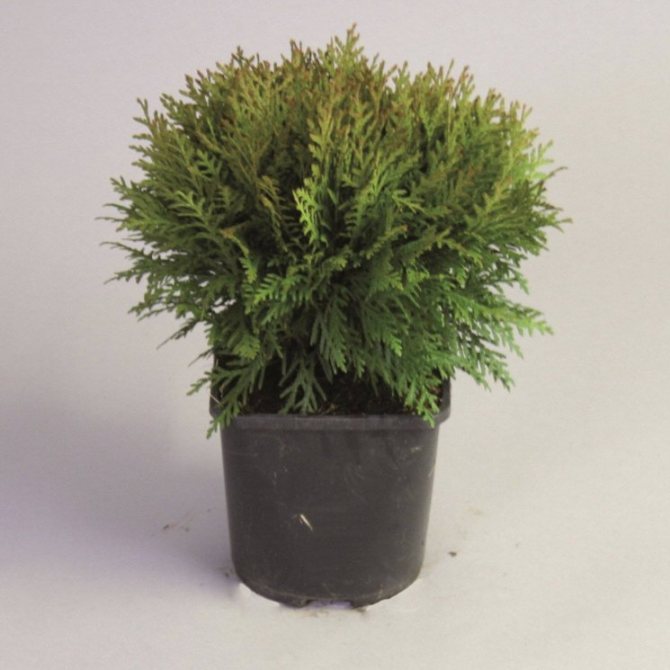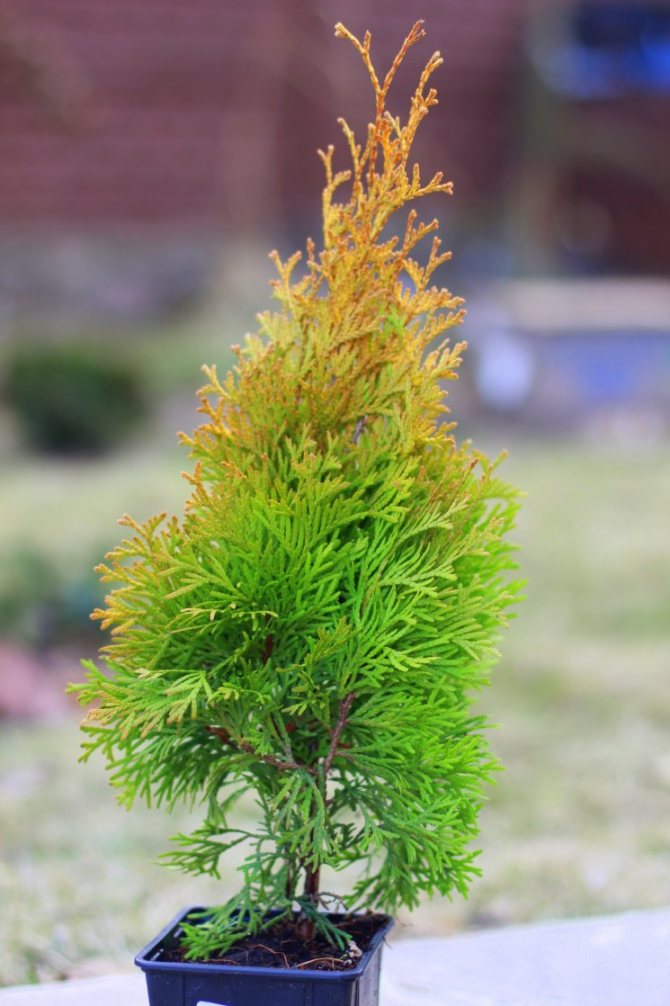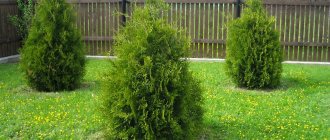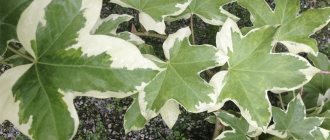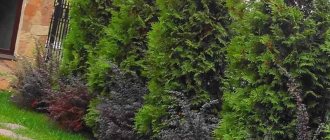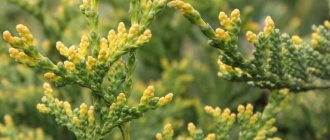To equip a personal garden in a stylish direction is not an easy job. To do this, it is necessary to design the garden in such a way that everything in it was in its place, it was beautiful, comfortable and cozy. Nowadays, they stopped using stone fences, since there is an option to use a hedge, which can please with its attractiveness. A plant such as thuja Brabant is an ideal plant for creating such a hedge. We learn the description and other information from the article below.
Features of the plant, the reason for its popularity
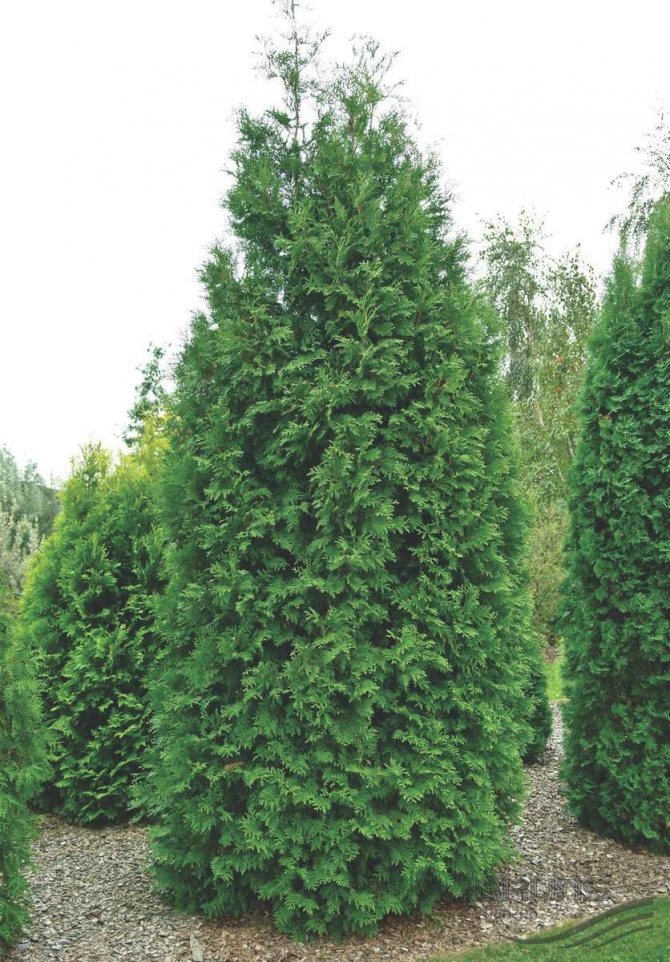
Thuja western Brabant (thuja occidentalis brabant) has two life forms: tree and shrub. Thuja is more commonly used as a shrub as it is popular for hedging. Both forms are common on the territory of our country.
Tuya is a long-lived giant. This is a representative of this. Cypress, which you will melt up to 20m (in the middle lane - up to 4-5m) and lives up to 150 years. The conical and lush shape of the crown, the needles in the form of light green scales rising up, makes the tree decorative. The bark is brown, flaking. Egg-shaped cones are also brown in color.
It is a fast growing culture... A valuable species, the planting of which is limited to arid areas and areas with a low temperature regime (-30-35C). A photo of an adult plant can be viewed in the article.
Interesting: There are 120 known varieties of Tui varieties. Among them, the western thuja is the most famous. They do not throw off their "green outfit" in the winter. It can only change to a lighter one. Thuja Brabant also belongs to such varieties.
Views
To date, several hundred varieties of thuja have been identified. Traditionally, they are divided according to the size of the annual growth. Botanists distinguish 5 groups - from full-grown to dwarf.
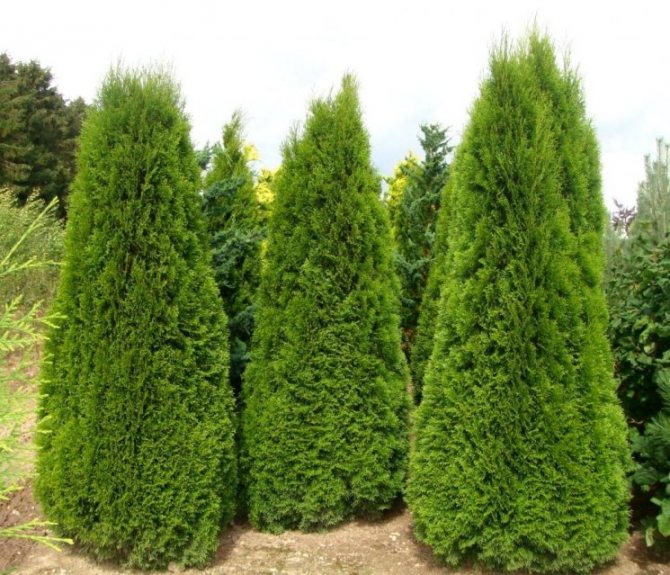

Thuja can be grown both singly and in groups. The method of application largely depends on the appearance of the crown.
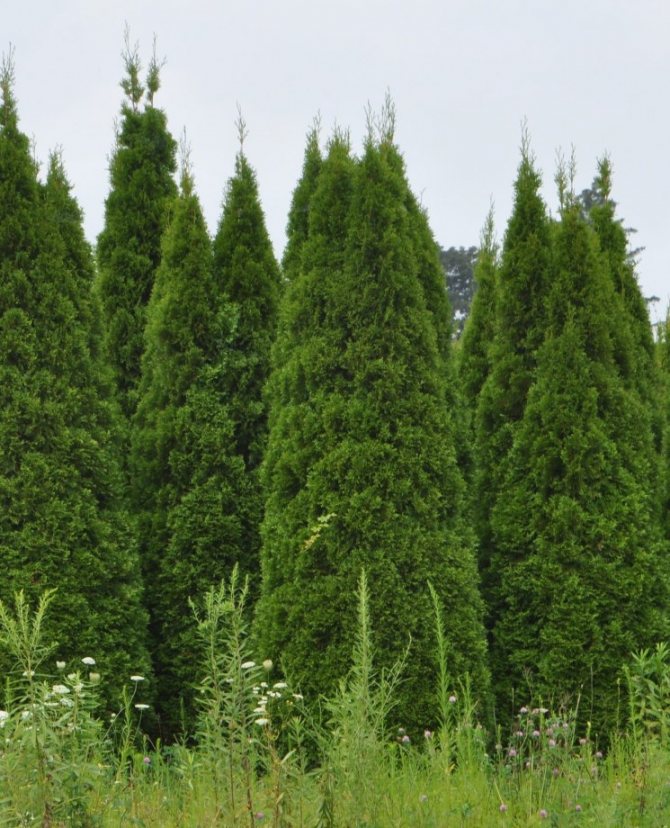

Species with evenly and densely spaced branches are used to build hedges. Let's analyze the varieties most popular with modern gardeners.
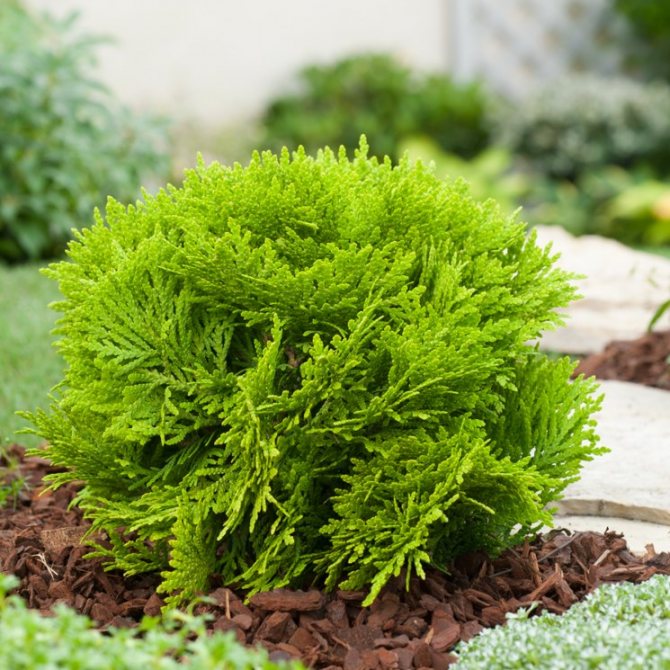

Which variety do you prefer: Brabant or Smaragd?
These are the two most popular varieties preferred by gardeners for decorating a plot or creating a hedge. What are their features?
| Brabant variety | Smaragd variety |
| The choice for those who want to see the creation of their own hands: a thuja hedge in a short time. Its growth rate is half a meter per year. To create a dense and fluffy crown, it is necessary to cut the crop 2 times per season. And to get an impenetrable green hedge, plant it every meter. | It also has a conical crown and light green needles. The crown is narrow pyramidal, keeping green color throughout the year. The crown is lush, does not need frequent pruning, because grows slowly. In order for the green wall to be dense, plants should be planted 80 cm apart. |
| The needles are light green. The shape of the bush can be modified. Differs in rapid growth. Most often used to create a hedge. | The color of the needles is more intense. Good "keeps" the shape of the crown. More decorative. |
| Photophilous and tolerates waterlogging, but does not withstand severe frosts. | Shade-tolerant, withstands frost -40C, but the soil needs drained. |
Both varieties, despite certain differences, tolerate cutting and shaping well. Compositions or geometric classics: the choice is yours.
Typical diseases and pests
By the appearance of thuja Brabant, it immediately becomes clear that she has some kind of problems associated either with improper care, or with the appearance of diseases and insect pests. The appearance of a diseased tree is fundamentally different from a healthy one. Of insects, weevils and wireworms can deliver special problems. In both cases, special insecticides will help. But weevils (larvae) can be destroyed by liming the soil.
Tuya Holmstrup (Holmstrup) - description and dimensions
Other problems and illnesses:
- late blight first affects the roots, and then damages the crown. The plant begins to wither quickly, the needles become gray and sticky. The reason may be over-watering or waterlogging of the soil. Fungicides will help to cope with the problem;
- fusarium causes drilling of the ground part of the plant. All damaged shoots must be removed, everything else must be treated with Fundazole;
- rust most often occurs in early spring. As a result, the needles begin to darken and fall off. Special fungicides containing copper will help;
- thuya aphid. It is easy to distinguish it from other pests, since it actively begins to move on the branches, which, as a result of its active influence, dry very quickly. The best drug to combat it "Karbofos".
Important! The main thing is to notice the problem in time, find out its cause and eliminate it in a timely manner.
Thuja Brabant - needles turn yellow
With the loss of the attractive appearance of thuja Brabant, it is not always worth shifting the responsibility to fungal diseases or pests. Sometimes the problem is the lack of elements. In particular, yellow foliage can indicate that there is not enough nitrogen in the soil. By the way, foliage can also turn yellow due to the fact that pets have taken the soil near the plant for the place of fulfillment of their own needs. They should definitely be weaned from this.
Important! In no case should you overuse dressings. Before purchasing a fertilizer, you should definitely consult with a specialist about the doses and frequency of use.
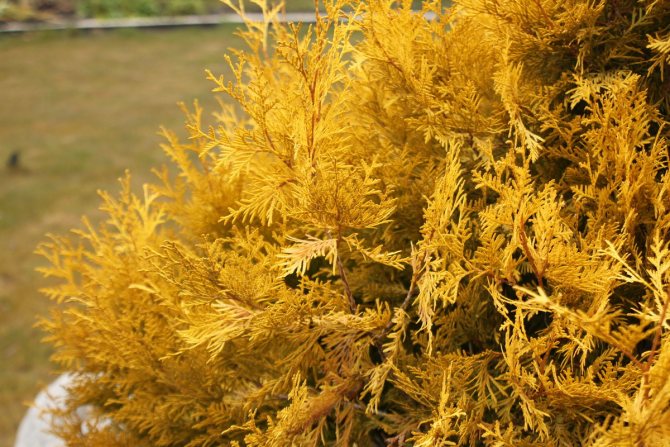

Thuja Brabant needles yellowing
Preparing for winter
This variety of thuja can withstand frosts down to -35 ° C, so adult trees do not need additional shelter, they will calmly survive the winter in the Central and Middle regions of the country. If the frosts are expected to be stronger, the thuja should be covered for the winter with special garden material. The same operation is necessary for young bushes up to the age of five. The soil at the bottom needs to be piled up to a height of about 15 cm, and covered with spruce branches around the same way as the lower part of the trunk.
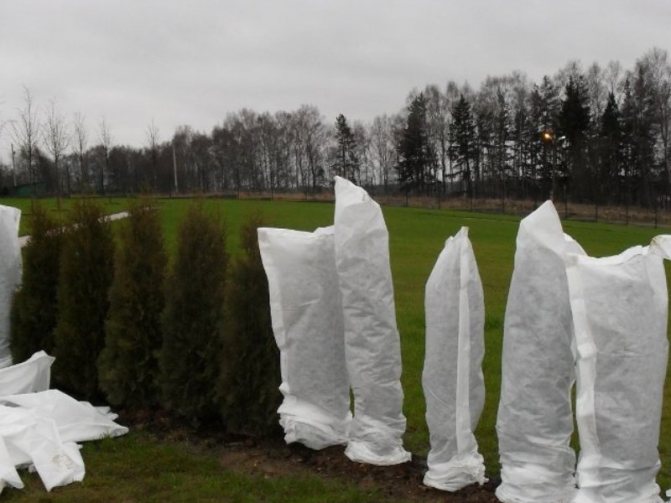

Shelter for the winter varieties Brabant
How to plant a crop correctly?
Thuja Brabant is unpretentious to the soil. But, grown on fertile soil, it is more fluffy, and the needles are brighter. On poor soil, it will look slightly different. So the soil affects the decorativeness of the plant.
The culture is photophilous, but it is better if the sun does not fall on the thuja during the day. This leads to dehydration of the needles, and the shrub (or tree) overwinters worse. A small partial shade is quite acceptable, but in a strong shade the crown will be rare.
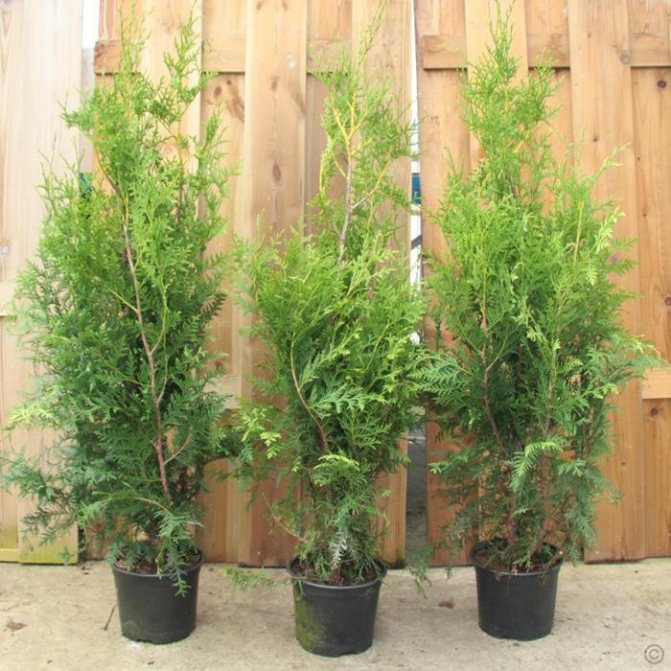

Having chosen a place, we proceed to landing:
- A young plant will tolerate planting and transplanting well in any season if the root system is closed. But usually planting is carried out in the spring.
- The planting hole must match the size of the root. Usually the diameter is up to 1m. If the soil is heavy, then drainage is necessary. These are pebbles, expanded clay, broken brick.
- The pit is filled with a mixture of earth, the composition of which is: leaf earth, peat, sand (2: 1: 1).
- We place the root collar of the seedling on the same level with the ground. If it is raised or deepened, then the tree may die.
- If an alley is formed from thuja, then the row spacing is 6-8m, and the interval between seedlings is 3-4m.If it is a hedge, then the distance between plants is 0.5-07m.
You need to know this: In order for the alley or the green hedge to be even, when planting, they pull a rope along which they dig a trench for seedlings. This will create a geometrically correct pattern.
Care: seven basic rules
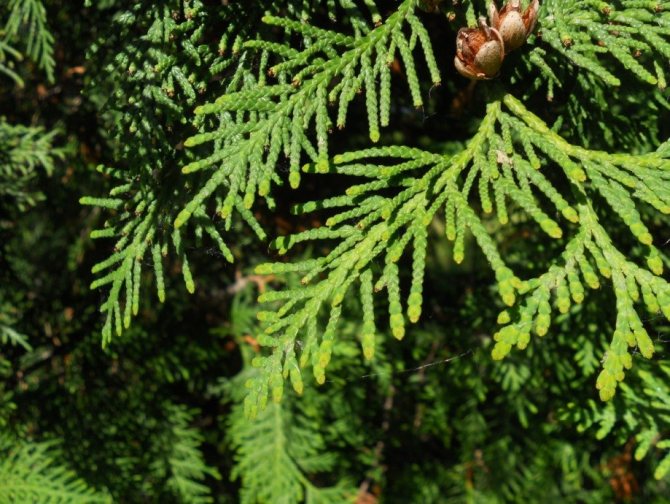

Care involves both traditional activities and special ones necessary for this type of plant. Step-by-step care looks like this:
- During the first month after planting water the seedling once a week... This should be done more often during dry periods.
- Regularly held loosening to a depth of 10 cmsince the root system of thuja brabant is superficial, it is easy to damage it. From above, it is advisable to mulch the soil with peat.
- In winter, branches need to be tied upso that they do not break under the snow mass.
- In the spring, you need to remove diseased and damaged shoots..
- Complex fertilizer for conifers is also used in spring, which makes it possible for the culture to grow quickly.
- The first two years, young bushes need to be covered in winter from frost, and in the spring - from the bright sun. You can close it with spruce branches. The grown thuja will no longer need this.
- Pruning begins from the third year of life... The upper part is pruned when the thuja has reached the height that suits you. The first pruning occurs at the beginning of summer, the second at the end of August. Thanks to systematic pruning, the crown is dense.
You need to know: When pruning, a pruner is used, which does not injure the cut points, making them even. So the wound on the branch will heal faster. Thuja Brabant can withstand shearing well, but no more than a third of the shoot needs to be cut off so that the culture remains strong.
Dannik
The year of hatching is 1948. The country of withdrawal is Denmark. Outwardly, it is a slow-growing, rather low spherical shrub with a dense crown.
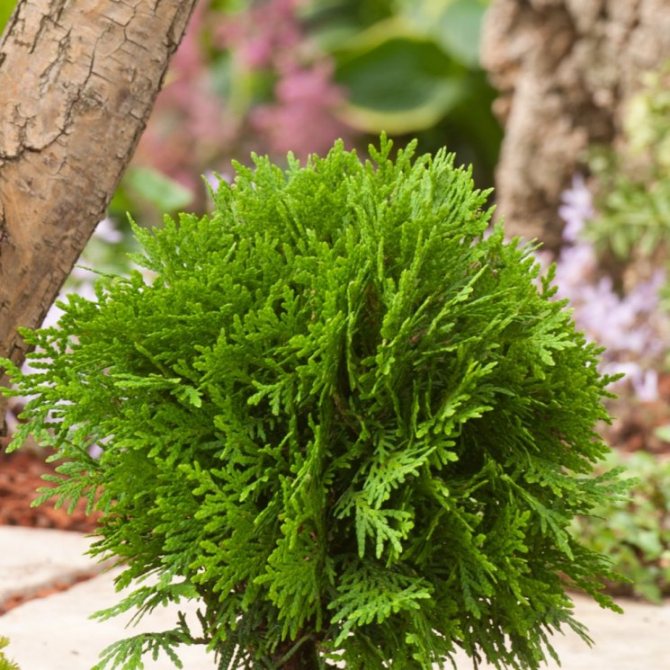

The needles are soft, narrow, green in color, resembling scales. The branches are arranged vertically.
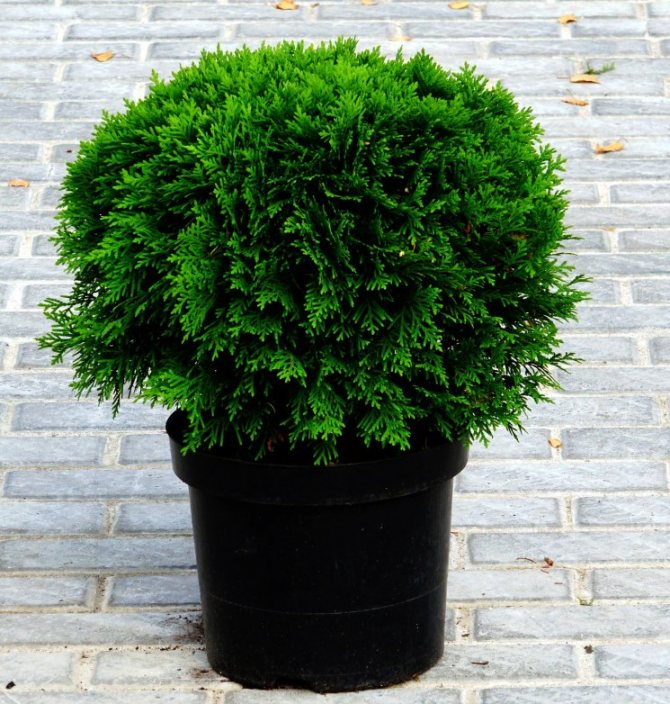

Thuya Golden Brabant: characteristics
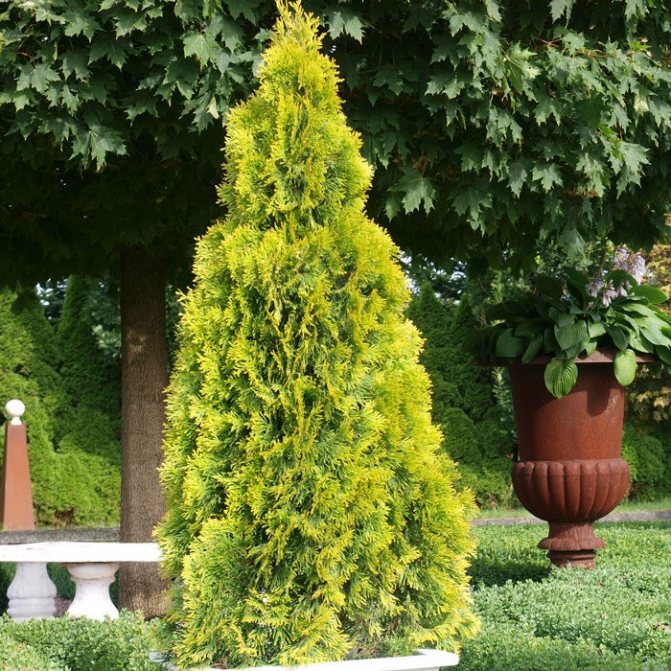

An evergreen tree with a conical crown is distinguished by the color of the needles. As the name suggests, it should be golden. Indeed, in the sun, the yellow-green color "plays", and the feeling is created that the branches are cast with a golden color.
The tree retains this color in winter, so it looks simply dazzling against the background of the snow cover. The variety has appeared recently, but it is already popular and loved by gardeners for its unpretentiousness, rapid growth, and decorative qualities. Looks good in group plantings, like a tapeworm, when "building" a hedge.
The unpretentiousness of the "golden beauty" is expressed in the fact that she:
- undemanding to soil;
- tolerates short-term waterlogging;
- withstands short drought;
- the variety is frost-resistant;
- tolerant of a haircut;
- grows in a city environment;
- fits well into any landscape.
You need to know: An adult plant firmly tolerates winter frosts, but in spring, in bright light, suffers from sunburn. It is important to shade the thuja, especially at a young age. To prevent the crown from being damaged by excess snow, the branches are pulled together for the winter. Sanitary pruning is carried out in the spring.
The price of thuja brabant seeds is within 700 rubles. The price of a seedling will fluctuate depending on the age of the plant. A small seedling can be purchased for 760 rubles, and an adult culture, the height of which reaches 3m. - for 9 800 (Moscow prices).
Thuja Brabant hedge
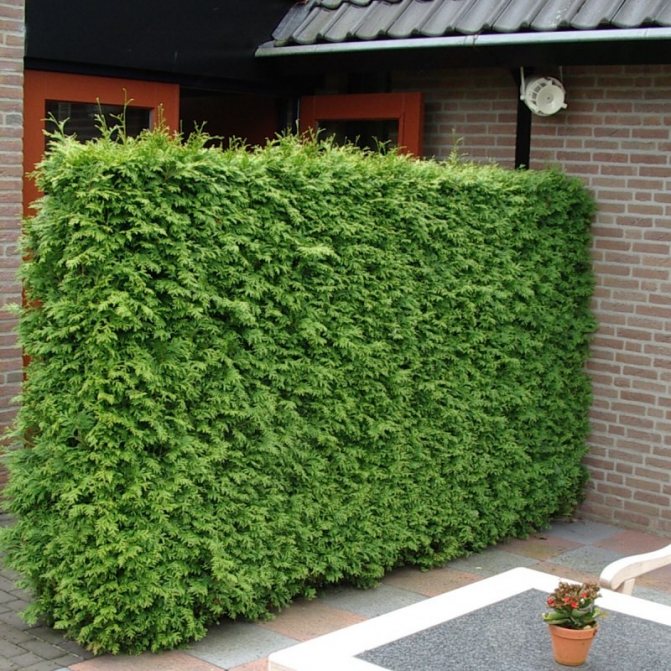

A living wall made of thuja is a reliable and low-passable fence, protecting the owners' garden site no worse than any fence. There are also internal fences, but these are already curbs, low and compact. The hedge, the planting rules of which were discussed above:
- will close boring landscapes and unattractive places on the site;
- will create calm conditions for rest;
- will make it possible to breathe not just clean air, but air containing phytoncides;
- will hide from gases, noise, dust;
- may look unusual, because it can be given any shape;
- has a high decorative effect in different seasons.
You will create for yourself a refuge, a place detached from another, noisy and hectic world. Perhaps you are a lover of natural, natural beauty, then pruning is not needed. The natural form also looks great.
But we will consider the question of how to cut a thuja, since many want to give their site beautiful shapes and proportions. In addition, it is the shearing that makes the plant more lush.
Spring pruning is the first pruning... The thuja already has strength after wintering. The second is held in August, when it begins to prepare for winter. When cutting, try to make the upper part narrower. Then a lot of light will fall on the lower branches and the bush will not be exposed. Remove young shoots, they recover faster.
It is convenient to use a coarse mesh in work. It is pulled evenly and those shoots that "look" out of the cells are removed. Cut off dead branches regularly. It is better to prune in cloudy weather so that those shoots that are open after pruning are not exposed.
This is interesting: After cutting, cuttings are left that are suitable for reproduction. This is a rare plant in which cuttings give roots in a jar of water without any stimulants or additional manipulations. In the second year, well-rooted, they are planted in the ground.
Gardeners reviews
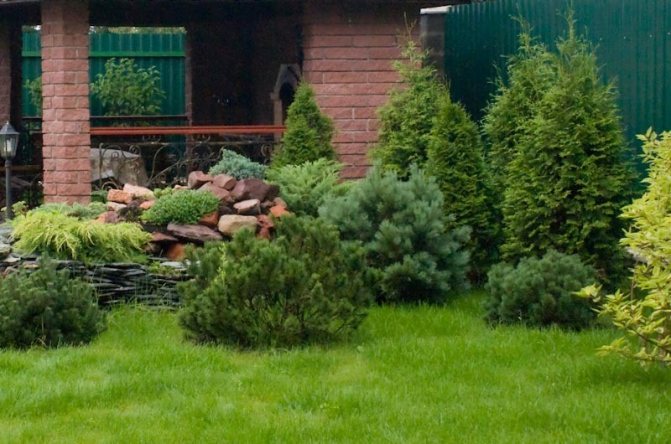

I live in Siberia, two years ago I bought saplings of thuja western Brabant in the nursery. Planted out for a hedge. They wintered well under the snow. In the spring I fed them, and they started to grow actively. So far, everything is in order, but they do not look like a hedge yet: they are still small.
I am a resident of the Urals. I read a lot about conifers, thuja, gardeners' reviews about them, but did not believe that she would grow up here. The husband bought seedlings, pruned them. And now I am delighted - we have a beautiful green fence. Moreover, it is green both in winter and in summer.
My husband and I fenced off the playground with the help of thuja plantings. We made a not very high fence. Both beautiful and comfortable. Moreover, thuja secretes antibacterial substances, so children breathe healing air.
I am a landscape designer and for my friends I created a composition of conifers, in which thuja western Brabant also "took part". The reviews of friends are the most enthusiastic!
Today, the abundance of conifers is simply amazing: tall, stunted, thorny, unpretentious, decorative. They all give us the opportunity to experiment and create something new. Thuja western Brabant stands apart, which not only gives room for imagination, but also has a rapid growth and the ability to purify the air, which, given the pace of our life and poor environmental conditions, is very important.
Landing nuances
If you decide to start planting western thuja, take care of the soil first. This plant prefers non-acidic dry loams. Sour soil must certainly be lime. Remember, the pH should be between 6 and 8.
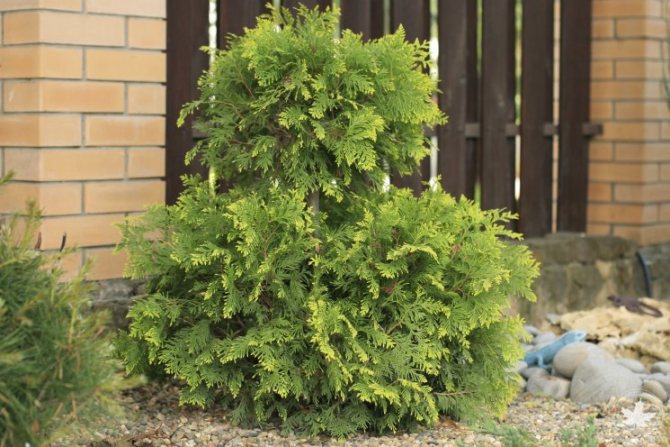

If the soil characteristics do not suit you, you can dig a hole under the shrub, into which a suitable soil mixture and top dressing are poured.
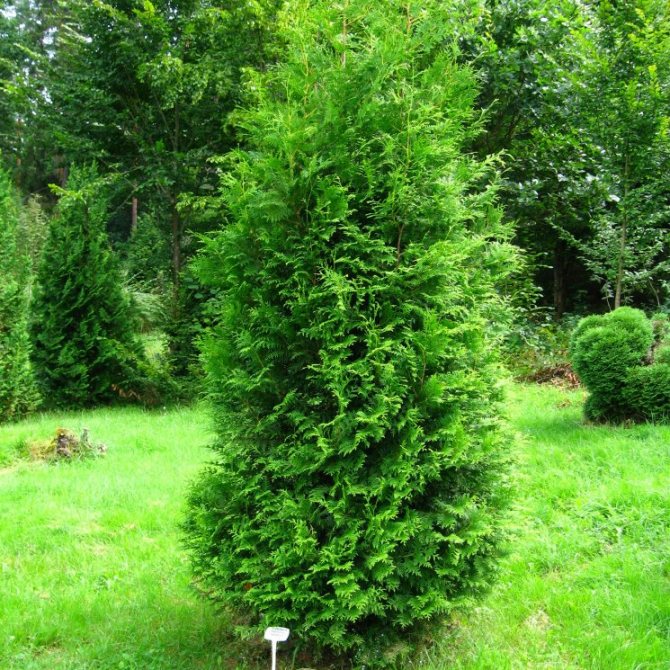

The dimensions of the fossa depend on the size of the ephedra. So, for a thuja with a height of 3-5 m, a pit of 1 * 1 * 1 m is required.And a two-meter plant should be planted in a hole 0.6 * 0.6 * 0.6 m.
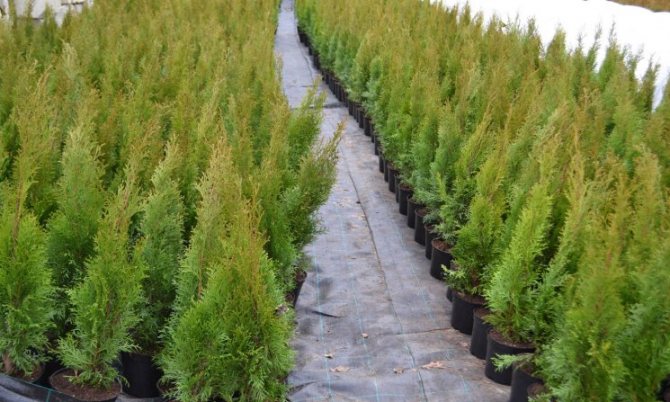

Here are the recommendations for the soil mixture: clay soil is supplemented with excavated soil and peat, sandy - the same plus turf, peat - loam and sandstone.
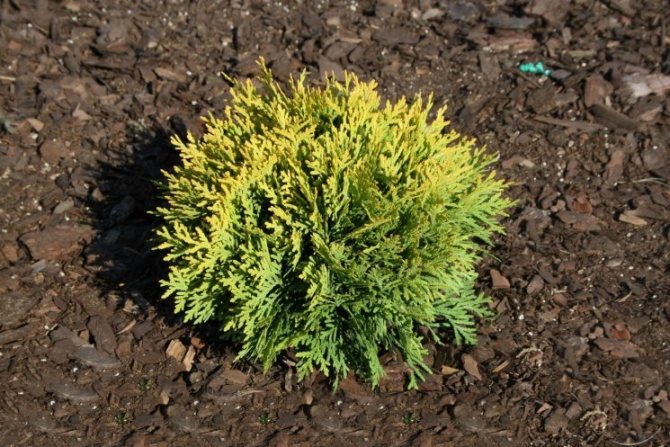

For this purpose, you can use gravel or brick shards. The thickness of the drain should not be less than a sixth of the depth of the hole.
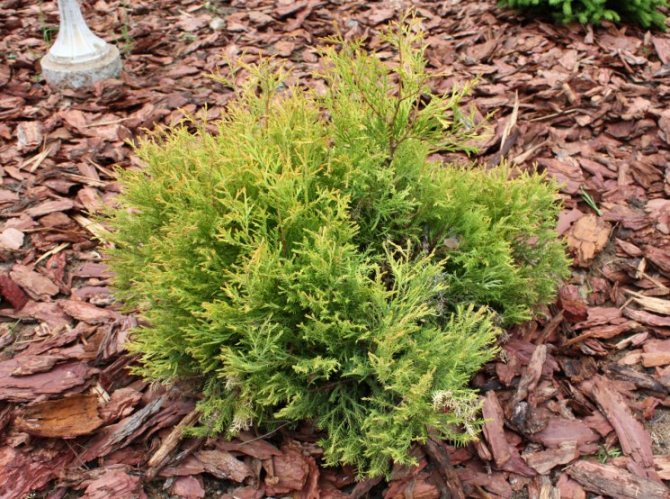

After planting is completed, the plant must be watered abundantly. There is no need to tamp the ground. You can make top dressing, starting from the second or third year.

